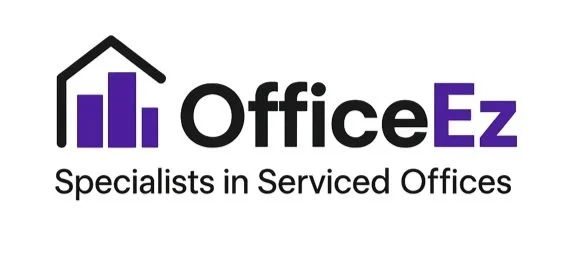
Glasgow
Glasgow, Scotland’s largest city, has fast become a hub for businesses seeking flexibility, excellent infrastructure, and strong transport links. Serviced offices in Glasgow offer turnkey workspaces geared for modern teams — from startups and creative agencies to established firms—but one of the standout perks is how well-connected the city is. Here’s what businesses should know..
In Glasgow, serviced offices are found in several desirable neighbourhoods:
City Centre — prestige, proximity to financial institutions, law firms, client density; close to Glasgow Central & Queen Street stations.
Merchant City — creative, cultural atmosphere; strong café & hospitality offering.
Finnieston — more modern, design-led, good for companies valuing aesthetic, collaboration and a different pace.
West End — more relaxed, leafy; favoured by tech firms, research-oriented organisations; proximity to the University of Glasgow.
Much of the appeal comes down not just to the quality of space, but how easy it is for clients, staff or partners to get there.
Road & Motorway Access
Good motorway access enhances private commuting, deliveries, and also makes it easier for clients coming by car.
Key motorways and road-routes:
M8 Major east-west artery between Glasgow and Edinburgh; also connects many suburbs and the airport. Offices near the M8 get good road access for clients and staff from across the central belt. Speeds and traffic vary, but it’s vital infrastructure.
M74 / A74(M) Connects Glasgow southwards towards Carlisle and the M6; important for access to England. Wikishire servicing clients or teams coming from the South (or shipping goods), being close to M74 is a big plus.
M73 Links the M74, M8, and M80, acting as an eastern bypass to ease traffic flow around the city. Helps avoid congestion for routes that don’t need to go through the city centre.
M80 Runs northward from Glasgow toward Stirling and beyond; links into the central belt. Useful for northern commuters or business partners; also provides route variety if there are delays elsewhere.
M77 Southwest route, towards Ayrshire etc. Good for staff commuting from or clients in the southwest; also for logistics etc.
How Travel Connections Enhance Serviced Office Value
Putting the transport and infrastructure together, here are ways in which travel connectivity boosts the attractiveness of serviced offices in Glasgow:
Wider talent pool & easier staff commuting
Excellent train and road links mean people can live further away and still commute reasonably. This opens up the potential for recruiting staff from the suburbs, other towns, even neighbouring regions.Client access & prestige
Being located close to major train stations (Central, Queen Street) or near a motorway junction can make it easier for clients to visit. First impressions count: postal address, ease of access, visible corporate environment.Flexibility & resilience
If one route is disrupted (train delays, roadworks), alternate motorways and train lines provide fallbacks. Proximity to multiple transit hubs (rail plus road plus airport) gives resilience.Overhead savings / Time savings
Less commuting time means higher productivity, less travel cost for visitors, and fewer delays. Also, when offices have good road access, deliveries (office supplies, etc.) are easier and cheaper.Prestige & amenity access
Serviced offices in desired central locations tend to come with more amenities — restaurants, cafés, shops, hotels — which benefit from being near transport hubs. Also good for networking, meeting people, hosting events.
Considerations & Potential Drawbacks
Of course, it’s not all perfect. Some things to watch out for:
Traffic congestion on major motorways (especially M8 during peak times) can eat into time savings.
Cost of transport: train fares, parking, fuel can be significant, especially for frequent commuters.
Some serviced offices might have higher rents in prime, well-connected areas. You might pay a premium for proximity to Central Station, city centre, or motorways.
Environmental / sustainability concerns: commuting by road tends to produce more emissions; some companies prefer green credentials, so being near good public transport is a plus.
Conclusion
Glasgow offers a strong case for serviced offices, especially for businesses that value:
flexible, ready-to-use workspaces
being centrally located or well-connected
staff and client accessibility
multiple transport options (train, motorway, airport)
For anyone considering setting up in Scotland or expanding, serviced offices in Glasgow give you a lot of the infrastructure and ease you’d expect in London or major UK hubs — but often with better value.
Travel & Transport Connections
One of Glasgow’s biggest selling points is its connectivity. Whether you’re commuting locally, travelling inter-city, or doing UK/overseas travel, the infrastructure is strong. These travel links significantly boost the value of serviced office locations in the city.
Train & Rail Connections
Main stations:
Glasgow Central is the principal station linking Glasgow to southern cities and England; Glasgow Queen Street handles many northern and local routes.Journey times:
From London to Glasgow by direct train (Avanti West Coast) takes approximately 4.5 hours.
Edinburgh is under an hour away.Regional & local connectivity:
There are strong connections to towns and cities throughout Scotland via ScotRail and other operators. For instance, North, West and East of Scotland are well served.Interchanges between stations:
Travelling between Glasgow Central and Queen Street stations takes roughly 15 minutes on foot, or alternatively via a free station-link bus service.Airport access:
Glasgow Airport is also relatively close to many of the central serviced offices. Some centres are within a 10-minute drive or easy shuttle connection.


